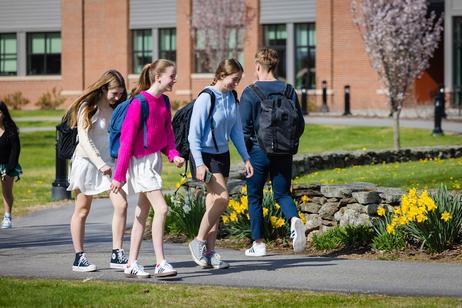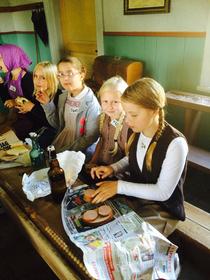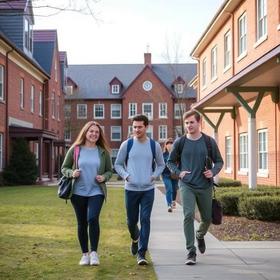Types of Boarding Schools (2025 Update)
When families begin exploring boarding education, one of the first—and most important—questions is: what kind of boarding school best suits our child? Boarding schools have diversified significantly over the past decade, and by 2025 the landscape includes not only classic college-prep institutions, but also specialized, hybrid, and alternative models. Below, we walk through the main categories, new trends, and what to watch for in your research.
1. Traditional College-Preparatory Boarding Schools
Definition & Focus:
These are what many people envision by “boarding school”—residential schools offering rigorous academics, small class sizes, broad arts and athletics programs, and strong college placement support.
2025 Snapshot:
There are around 279 major college-preparatory and junior boarding schools in the U.S. and Canada, serving over 108,900 students.
Top-tier boarding schools now often charge $60,000 to $80,000 per year for full boarding, though some schools remain below that level depending on location and amenities.
For example, EF Academy New York lists boarding tuition at $71,700 for the 2025 year.
On average, a 5-day boarding school (students go home on weekends) runs about $55,425, while a full 7-day boarding model averages $69,150.
Roughly one-third of students at elite boarding schools receive financial aid, with average grants often exceeding $20,000. Boarding School Review+2Boarding School Review+2
Strengths & Considerations:
Well-resourced facilities (labs, arts studios, athletics)
Strong alumni networks and college counseling
Diversity in student body (often 20–30% international students)
However, not all families can absorb the steep costs—even with aid. Some top institutions have recently adopted income-cap or free-tuition models for lower- and middle-income families. Wall Street Journal
2. Therapeutic & Behavioral Boarding Schools
Definition & Focus:
These schools serve students who require more than academic support. They integrate counseling, structured environments, and therapeutic interventions to help students with emotional, behavioral, or mental health challenges.
Why Families Choose Them:
To provide a safe and consistent environment away from negative influences
To offer wraparound care: therapy, life-skills coaching, academic instruction
For students recovering from trauma, addiction, or severe anxiety/depression
Trends in 2025:
Growing regulatory oversight: many states now require licensing and external audits of therapeutic programs
Emphasis on evidence-based practices, measurable outcomes, and family involvement
Some centers now partner with universities to offer accredited coursework alongside therapy
Cautions:
Variability in quality: accreditation and oversight matter
Cost can be high, often above traditional boarding rates
Placement should involve pediatric, psychological, and educational evaluation
3. Military & Leadership Boarding Schools
Definition & Focus:
These institutions combine classic academics with a disciplined, hierarchical structure, often inspired by military models. Students live in dormitories, follow uniforms, drill, and engage in leadership training.
2025 Context:
Some traditional military academies have modernized their curriculum to include STEM, global studies, and pre-college tracks
Leadership development programs now more frequently emphasize civic service, ethics, and global competencies
This model appeals to families seeking structure, accountability, and leadership skills
Examples & Notes:
Some military-style schools are coed, others single gender
Many offer a middle-tier option—students may not be required to pursue future military careers
Consider whether the structure matches your child’s temperament
4. Hybrid & Flexible Boarding Models
Definition & Focus:
Emerging in the 2020s, these schools offer flexible residency: students stay on campus during the week or for part of the year, then return home on weekends or breaks. Some also function as day schools with boarding wings.
Why they’re growing:
Reduced cost relative to full boarding
Appeal to families within commuting distance
Greater work-life balance and emotional flexibility for students
Trends in 2025:
Some schools now let students pick whether to board during fall, spring, or winter terms
Hybrid models help schools manage demand and optimize facility use
Often used in urban or suburban locations where many families live within reach
Example Insight:
According to a 2025 Boarding School Review article, roughly 10% of U.S. K–12 students attend private schools; boarding schools remain a niche but are evolving with global connectivity and inclusivity. Boarding School Review
5. Religious & Faith-Based Boarding Schools
Definition & Focus:
These are boarding schools affiliated with religious organizations (Christian, Jewish, Islamic, etc.). In addition to academics, they integrate faith formation, worship, character development, and service.
Attributes in 2025:
Students may follow daily prayers, religious studies, and community service
Tuition may be discounted for faith-centered families or subsidized by sponsoring organizations
Many faith-based boarding schools also adopt rigorous college-prep curricula
Considerations:
Fit between family beliefs and school ethos is essential
Some of these schools may lag behind in facilities or offerings compared to nonsectarian schools
Always explore how religious life is integrated (compulsory vs optional)
6. Specialized & Niche Boarding Schools
Definition & Focus:
These schools cater to students with particular talents or needs—arts, athletics, STEM, environmental studies, language immersion, or those from abroad.
2025 Highlights & Examples:
Arts and performance boarding schools: Intensive curricula in music, dance, visual arts, or theater built alongside core academics
STEM or tech-focused boarding schools: Some partner with universities or industry for advanced labs and internship pipelines
Language immersion or global boarding schools: Students live in a full-immersion environment (French, Mandarin, Spanish, etc.)
Boarding with environmental or outdoor emphasis: Schools integrate wilderness, sustainability, or outdoor leadership programs
These niche institutions often draw students globally, enhancing cultural exposure. Many now include certificates, partnerships, or capstone projects in their specialty area.
7. Public & Charter Boarding Schools (Less Common)
Definition & Focus:
A small and growing category: public or charter schools that provide boarding options, especially in rural or underserved regions. Students may pay subsidized rates or receive state support.
Current Status in 2025:
Rare in the U.S., but more common abroad
Where they exist, they often serve students from remote or underserved regions
These models emphasize equity, expanding access to quality education in regions with limited school infrastructure
2025 Trends & Insights: What’s Changing
International Enrollment & Global Reach
In 2024–25, 45% of NAIS-member boarding schools reported an increase in international student enrollment, reflecting renewed global interest.
Boarding schools are acting as hubs for global exchange, offering cross-cultural curricula and exchange programs.
Financial Aid Innovation & Equity
Schools are increasingly adopting income caps or “tuition-free” policies for students from lower-income households (e.g. Deerfield Academy’s new policy). Wall Street Journal
Competitive aid packages now include merit scholarships, need-based grants, and work-study arrangements.
Cost Pressures & Tuition Inflation
Fee increases continue: many well-known boarding schools raised tuition by 3–9% year over year in 2024–25.
Rising costs in food, maintenance, and staff wages are major pressure points in Australian and U.S. boarding fee inflation.
Emphasis on Mental Health & Well-Being
Modern boarding schools increasingly embed wellness—counseling, mindfulness, digital detox, peer support systems—into daily life
Some schools are banning phone use or instituting “quiet hours” to foster social connection and reduce screen fatigue
Regional & Post-COVID Shifts
In some regions, boarding has resurged after COVID-era dips, especially as families look again toward residential schooling
Some schools now offer modular, shorter boarding “residences” or term-based living for flexibility
Choosing the Right Type: Questions to Ask
When considering boarding schools, families and students should evaluate a few key dimensions to find the right fit:
| Dimension | Questions to Ask |
|---|---|
| Academic match | Does the school support honors, AP, IB, or college-level coursework? |
| Residential style | Is boarding full-time, 5-day, or hybrid? |
| Student support | What counseling, mentorship, and wellness services are built in? |
| Special focus | Does your child’s interest (arts, STEM, leadership) align with the school’s strengths? |
| Cost & aid | What percentage of students receive aid? Are there income caps or free-tuition policies? |
| Culture & values | Does the school’s ethos (faith-based, military, progressive) fit your family’s values? |
| Diversity & demographics | What is the mix of domestic vs. international students? What’s the student-faculty ratio? |
For example, a musically gifted student might thrive in a specialty arts boarding school, while a student needing structure and accountability might benefit from a military-style environment. A family concerned about cost might favor hybrid or public/charter boarding options.
Conclusion
Understanding the types of boarding schools available in 2025 is essential for families who seek the best environment for their child’s growth. The classic college-prep boarding school remains prominent—albeit at premium cost. Yet, newer models like hybrid boarding, therapeutic schools, and specialized institutions now offer alternatives tailored to different needs, personality types, and financial situations.
As you research and visit campuses, make sure to weigh academics, residential style, student support, financial aid, and culture in light of your child’s temperament and goals. And when possible, consult authoritative sources—like National Center for Education Statistics, school accreditation bodies, or reviews from boardingschoolreview.com—to verify claims. (See, for instance, detailed school profiles and tuition comparisons here: BoardingSchoolReview)
With thoughtful comparison and site visits, you can identify a boarding school type that aligns with both your child’s ambitions and your family’s values—so they can thrive academically, emotionally, and socially.












